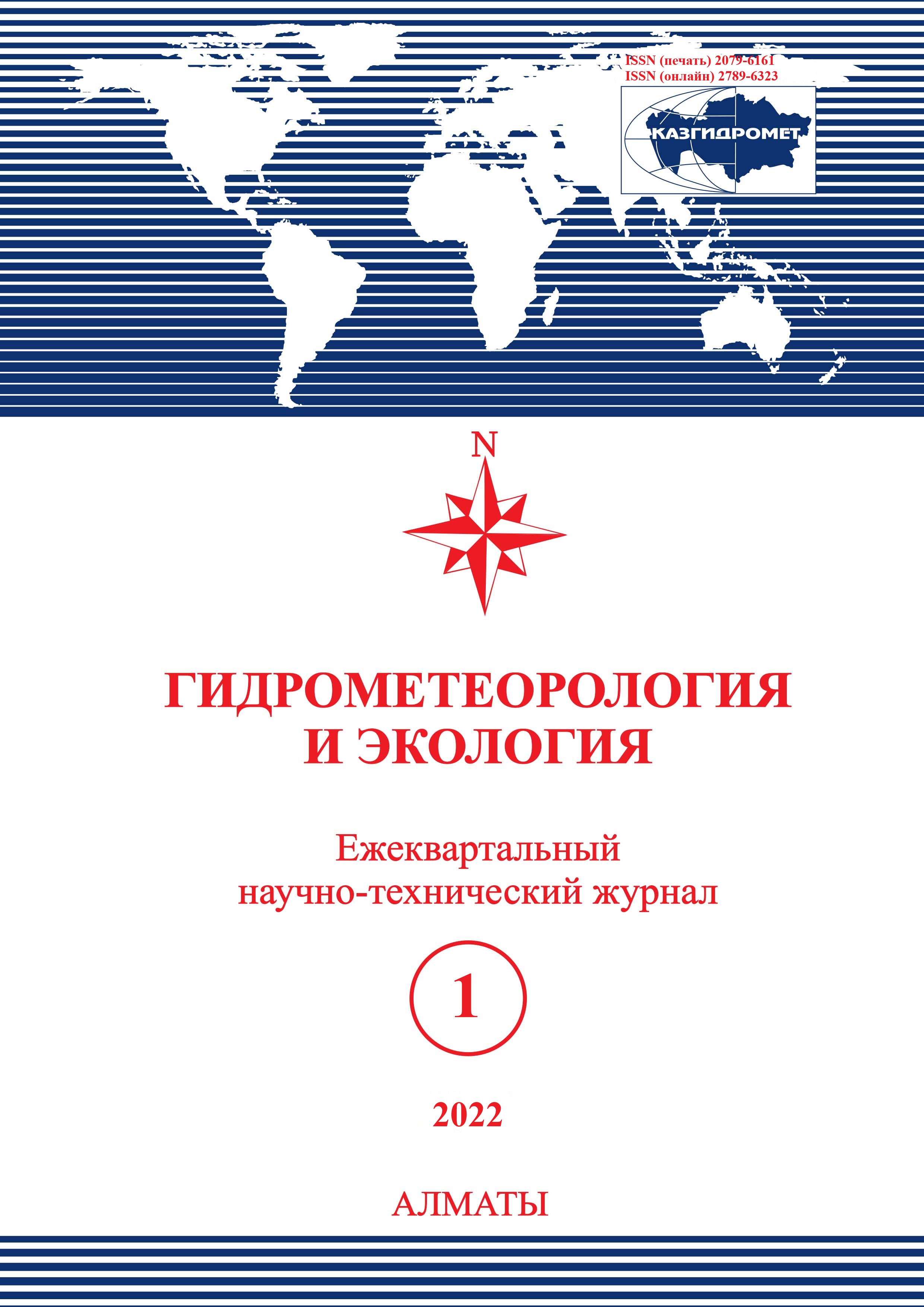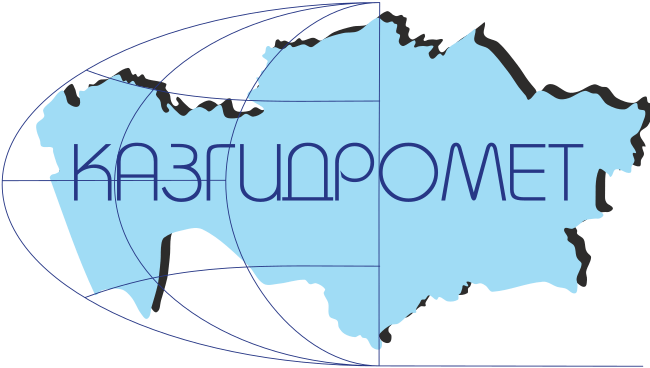RUNOFF DYNAMICS OF THE IRTYSH RIVER UNDER THE CONDITIONS OF CLIMATE CHANGE
DOI:
https://doi.org/10.54668/2789-6323-2022-104-1-65-82Keywords:
Kazakhstan Altai, long-term climate fluctuations, runoff dynamics of the Irtysh River, forecastAbstract
The climatic dynamics of temperature and humidity in the region of Kazakhstan Altai and its influence on the runoff of the Irtysh (Ertys) river are considered. It is shown that climatic changes in the region generally reflect such changes in the territory of Kazakhstan, however, there are a number of features, consisting in the degree of severity of extremes and some of their delay in relation to central Kazakhstan. Surface runoff follows the dynamics of precipitation and temperature in the area of its formation. The time course of the runoff in the upper and middle reaches of the Irtysh is significantly different, which is the result of the influence of economic activity, as a result of which part of it is irretrievably taken. It has proven difficult to quantify runoff loss. A forecast is made of expected changes in runoff under the influence of climate change.
Key words: Kazakhstan Altai, long-term climate fluctuations, runoff dynamics of the Irtysh River, forecast.
References
Анисимов О.А. Последствия изменений климата в регионах северного полушария//Изменения климата и их последствия. СПб:Наука. 2002.-С.239-250.
Бурлибаев М.Ж., Шенбергер И.В., Бурлибаева Д.М., Анализ влияния весенних обводнительных попусков реки Ертис на состояние речной экосистемы//Сб. «Некоторые аспекты гидроэкологических проблем Казахстана»., 2015, вып. 2. С.145-158.
Бурлибаева Д.М. Гидроэкологические основы деления вод на трансграничных реках Казахстана. Монография.-Алматы: изд. «Каганат»-2017.-340с.
Гирс А.А. Многолетние колебания атмосферной циркуляции и долгосрочные гидрометеорологические прогнозы. – Л., Гидрометеоиздат, 1971. 488 с
Конвенция о праве несудоходных видов использования международных водотоков ООН [Электронный ресурс] / (Convention on the Law of the Non-navigational Uses of International Watercourses) 1997 г. – Режим доступа свободный: https://www.un.org/ru/documents/decl_conv/conventions/waters.shtml, – Загл. с экрана.
Конвенция по охране и использованию трансграничных водотоков и международных озёр ЕЭК ООН [Электронный ресурс] / (Convention on the Protection and Use of Transboundary Watercourses and International Laces). Режим доступа свободный: https://www.un.org/ru/documents/decl_conv/conventions/waters.shtml.- – Загл. с экрана.
Логинов В.Ф., Лысенко С.А. Современные изменения глобального и регионального климата. Минск: Белорусская наука, 2019.315 с.
Медеу А.Р., Мальковский И.М., Толеубаева Л.С., Алимкулов С.К. Водная безопасность Республики Казахстан; проблемы устойчивого водообеспечения. Алматы, 2015-582с.
Мишулина О.А. Статистический анализ и обработка временных рядов.-М.: МИФИ. 2004.-180с.
Оценочный доклад об изменениях климата на территории Казахстана./Отв. Исполнитель Долгих С.А. Астана. 2014.-87с
Синоптические процессы Средней Азии / В.А. Бугаев, В.А. Джорджио и др. Ташкент, изд. АН Узбекской ССР, 1957, 447 с
Смагулов Ж.Ж., Сапарова А.А., Загидуллина А.Р., Баспакова Г.Р. Водохозяйственные исследования и разработка сценариев развития водопотребления в трансграничном бассейне реки Ертис (казахстанская часть)//Гидрометеорология и экология-2019, №3,-С.114-128.
Справочник по климату Казахстана. // Многолетние данные. Атмосферные осадки. Вып.1-14. - Алматы: Казгидромет, 2005
Хельсинкские правила использования вод международных рек [Электронный ресурс] / (ILA Helsinki Rules on the Uses of the Waters of International Rivers) 1966г. Режим доступа свободный: http;//docs.cvntd.ru/document/1900698 – Загл. с экрана.
Чередниченко А.В. Динамика климата Казахстана. Начало эпохи похолодания.-Алматы.-2015-237с.
Чередниченко А.В. и др. Временные ряды температуры и осадков. Статистический анализ. – Алматы, 2013.–366 с.
Чередниченко А.В. Изменение климата Казахстана и возможности адаптации за счёт доступных водозапасов облачности.-Бишкек.-2010.- 259с.
Чередниченко А.В., Чередниченко В.С. Динамика изменения климата Казахстана. - Алматы. - 2020-499 с.
Чичасов Г.Н. Численные методы обработки и анализа гидрометеорологической информации. М.: ООО «БОРГЕС». 2017.-235с.
Шкляев А.С. Особенности распределения осадков и стока на среднем и южном Урале и их связь с атмосферной циркуляцией. // Ученые записки Пермского государственного университета им. А.М. Горького - № 112. - 1961. - 108с.
Alexander Cherednichenko, Alexey Cherednichenko, V.S. Cherednichenko, E.N. Vilesov.2015. Climate change in the City of Almaty during the past 120 years. // Quaternary International journal // homepage: www.elsevier.com/locate/quaint.
Amaya D.J., Siler N., and others The interplay of internal and forced modes of Hadley Cell expansion: lessons from the global warming hiatus/ J Geophys Res Ocean 120:6782–6798 CrossRefGoogle Scholar
Beek A.T., Vos F., Florke M. (2011) Modelling the impact of global change on the hydrological system of the Aral sea basin/ Physics and Chemistry of the Earth 36: 684-695.
Cherednichenko, A.V., Cherednichenko, A.V., Cherednichenko, V.S. Scenario of expected climate and change of surface drain in north Kazakhstan IOP Conference Series: Earth and Environmental Science 321(1), 012011, 2019
Herra P.M., Hiscok K.M. (2008) The effects of climate change on potential ground water recharge in Great Britain. Hydrological processes 22: 73-86.
Houghton J.T. Meira Filho L. C., Callander B.A., Harris N., Kattenberg A., Masked K. Climate Change 1995: The science of climate change. – Cambridge, Cambridge Univ. press, 1996, 572 p
IPCC, 2013: Climate C: the change 2013: Physical Science Basis. Contribution of Working Group I to the Fifth Assessment Report of the Intergovernmental Panel on Climate Change/T.F. Stoker et al. New York: Cambridge Univ. Press, 2013. 222p.
Jiang T., Su B.D., Hartman H. (2007) Temporal and spatial trends of precipitation and river flow in the Yangtze river basin, 1961-2000/ Geomorphology 85: 143-154.
Rahmstorf S. Box J.E, and others. Exceptional twentieth-century slowdown in Atlantic Ocean overturning circulation/Nature Climate Change volume 5, pages 475–480 (2015)doi:10.1038/nclimate2554






